From Feedback to Performance Excellence
Boost Workforce Productivity with Smarter Performance Management. Improve results with clear goals, measurable metrics, and continuous feedback—all in one integrated system designed to drive growth.
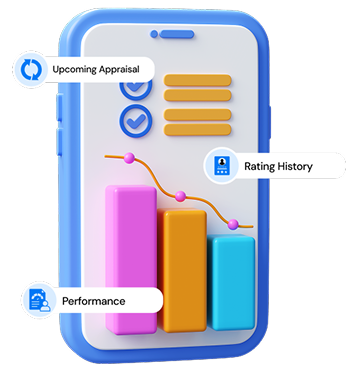
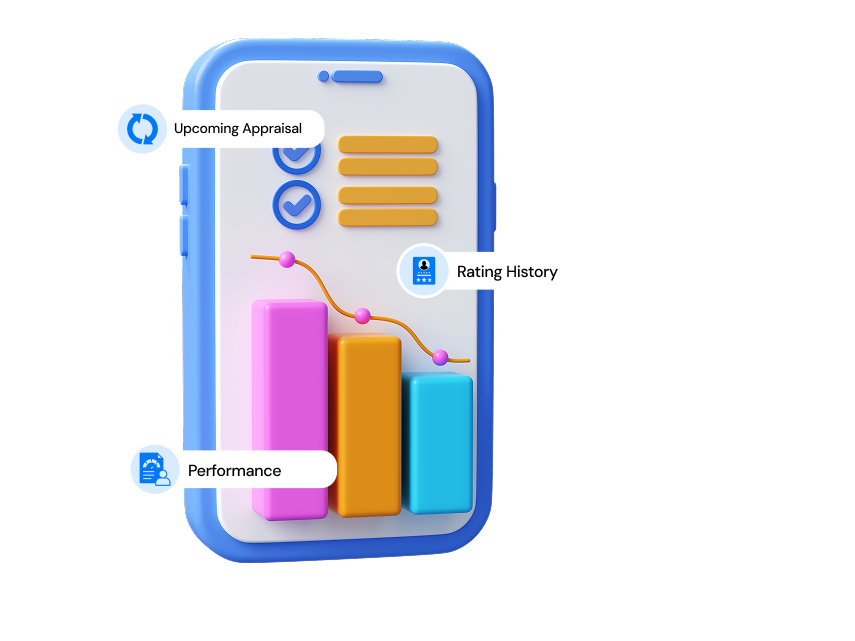
Boost Workforce Productivity with Smarter Performance Management. Improve results with clear goals, measurable metrics, and continuous feedback—all in one integrated system designed to drive growth.



Run appraisal cycles that stay on schedule and support fair, transparent evaluations. With defined timelines and clear processes, you eliminate last-minute rush and strengthen trust across the organisation.
 Set timelines, stages,
and participants in advance
Set timelines, stages,
and participants in advance
 Ensure reviews happen on
time without chaos
Ensure reviews happen on
time without chaos
 Maintain a consistent and
fair process for all employees
Maintain a consistent and
fair process for all employees
 Build trust with
transparent and accountable reviews
Build trust with
transparent and accountable reviews
 Support managers and
employees with a system that aids talent planning
Support managers and
employees with a system that aids talent planning

Build a culture of growth with a clear framework for skills and competencies.
 Define role-specific
skills and behavioural competencies.
Define role-specific
skills and behavioural competencies.
 Track employee progress
and development over time.
Track employee progress
and development over time.
 Align individual growth
plans with organisational goals.
Align individual growth
plans with organisational goals.
 Evaluate skills
objectively to guide promotions, training, or role changes.
Evaluate skills
objectively to guide promotions, training, or role changes.
Empower managers to have meaningful, data-backed development conversations.
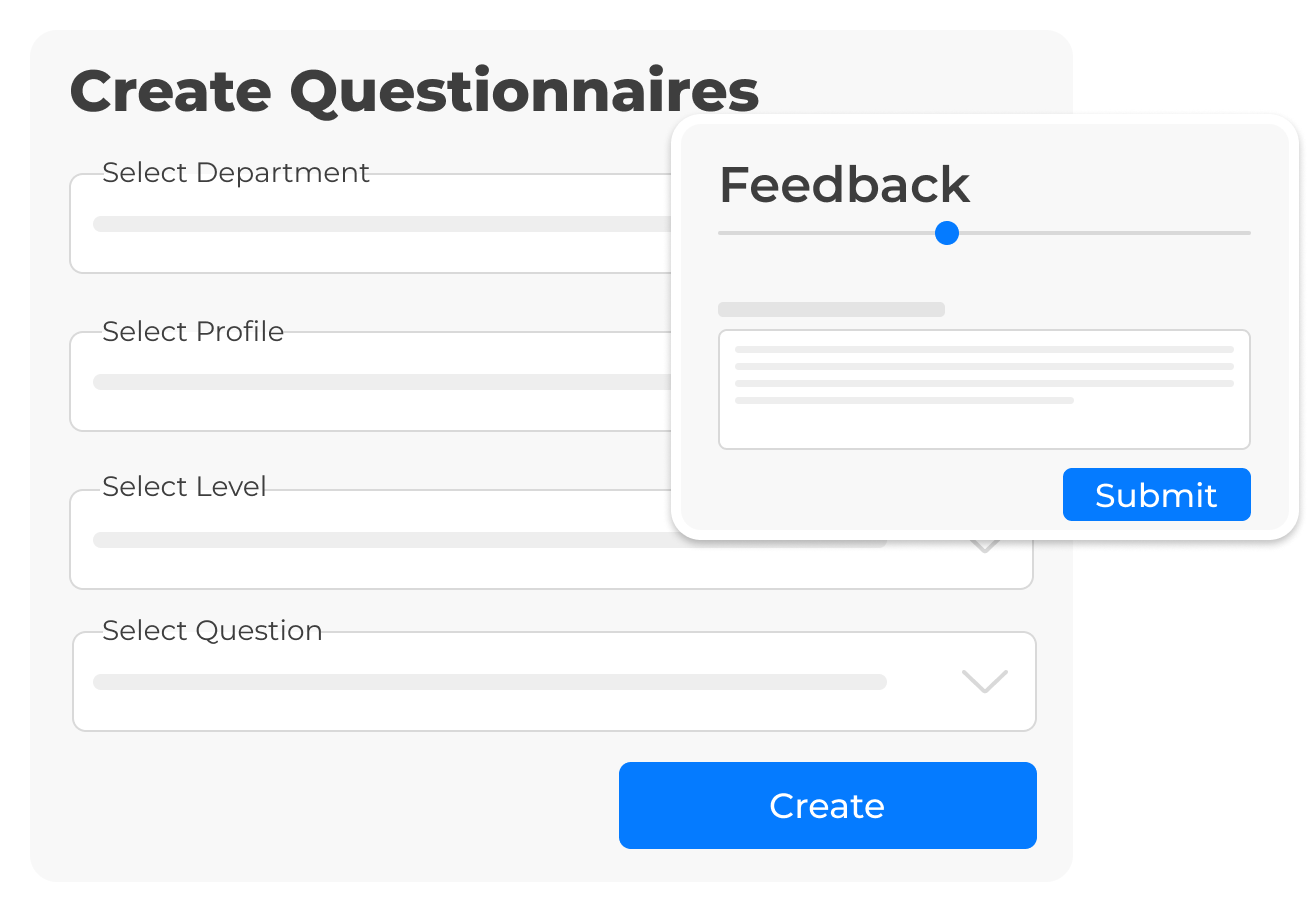
Capture the feedback that truly matters with tailored review forms.
 Create questionnaires
specific to roles, seniority levels, or departments.
Create questionnaires
specific to roles, seniority levels, or departments.
 Use ratings and open
questions to gather feedback.
Use ratings and open
questions to gather feedback.
 Standardise feedback
collection while keeping it relevant.
Standardise feedback
collection while keeping it relevant.
 Support 360-degree
reviews or manager-only assessments as needed.
Support 360-degree
reviews or manager-only assessments as needed.
Turn performance reviews into actionable conversations that support employee growth.
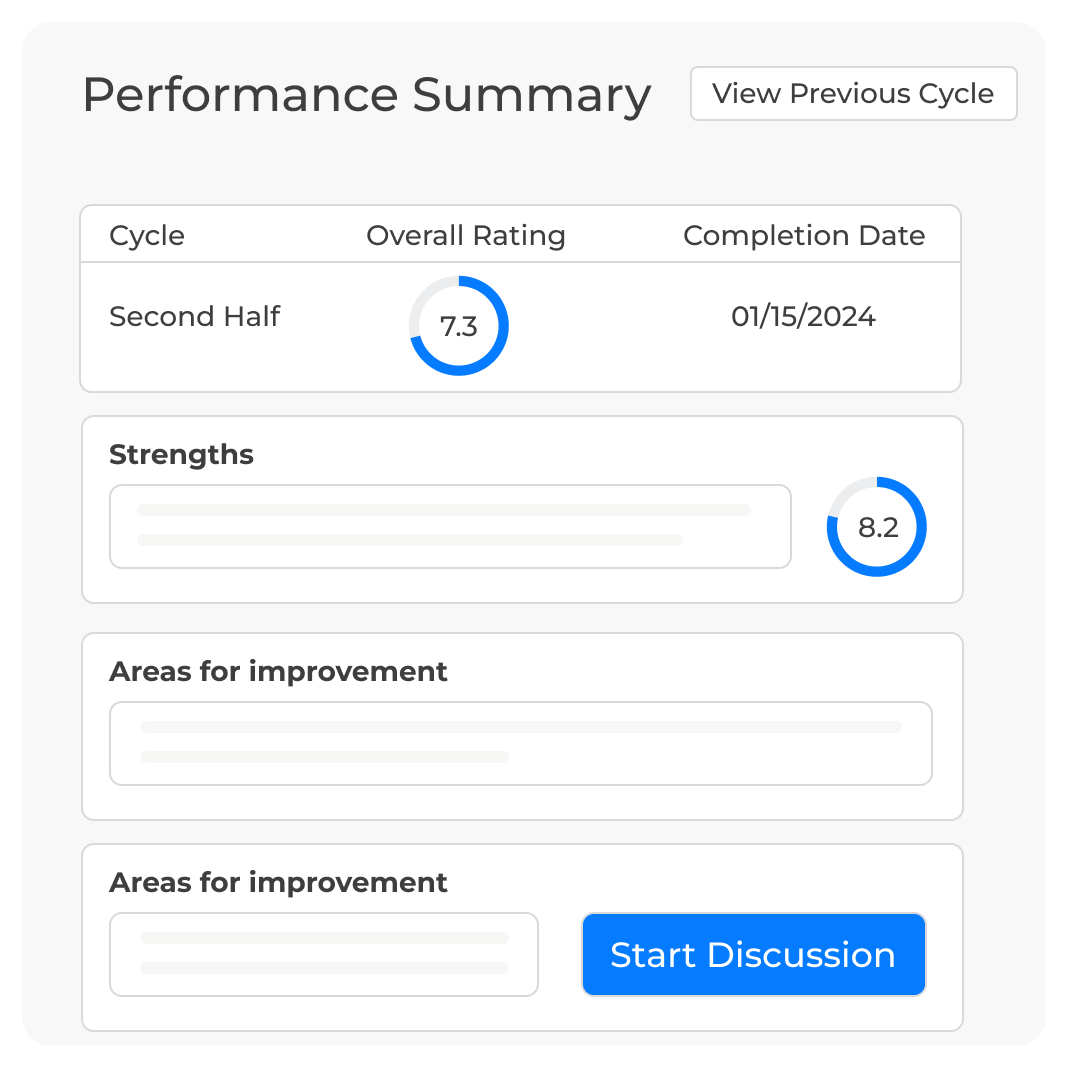
Help employees and managers align with clear, easy-to-understand appraisal summaries.
 Get clear summaries for
each finished cycle.
Get clear summaries for
each finished cycle.
 Highlight key strengths
and achievements.
Highlight key strengths
and achievements.
 Spot improvement areas
and set goals.
Spot improvement areas
and set goals.
 Support open talks about
next steps, training, or career plans.
Support open talks about
next steps, training, or career plans.
Make performance management regular and team-focused, not just a yearly formality.
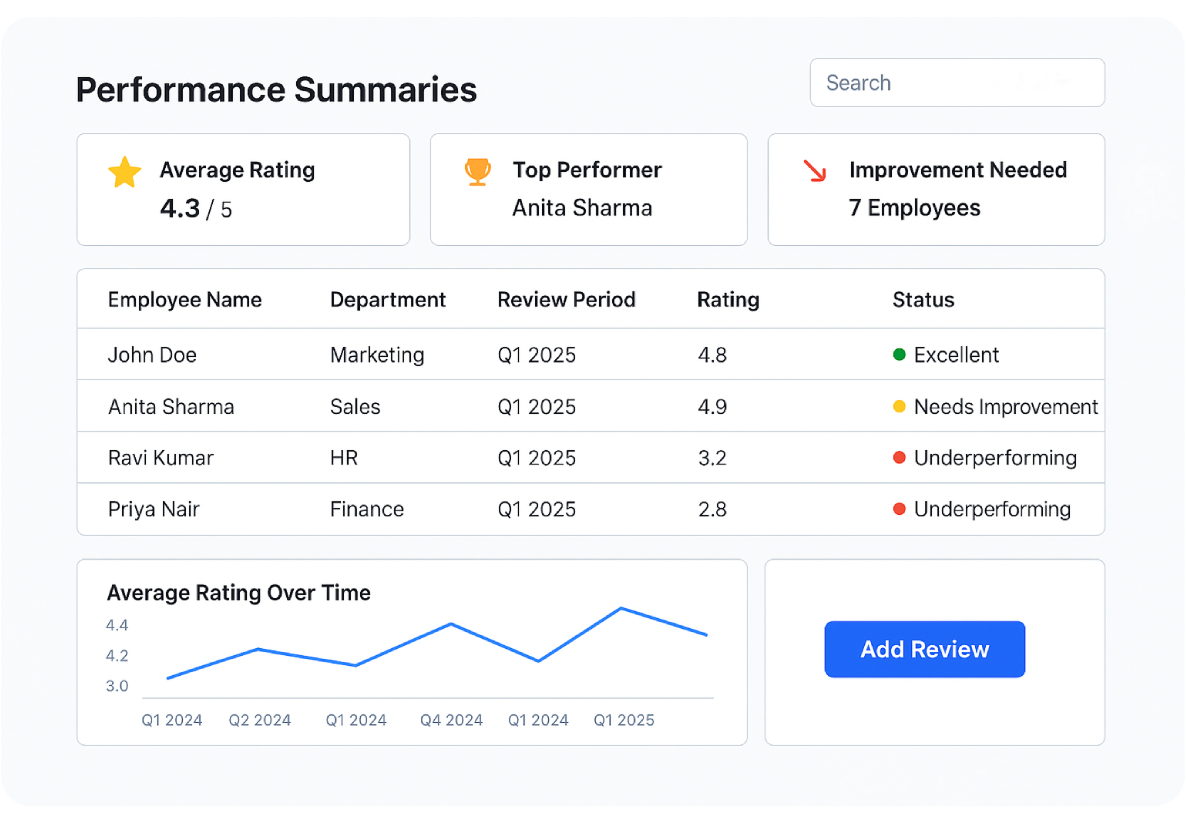
Access powerful, detailed reports to analyse and improve performance management at every level.
 Appraisal Status Reports - Track which reviews are complete, pending, or in progress.
Appraisal Status Reports - Track which reviews are complete, pending, or in progress. Appraisal Ratings Report - See overall performance ratings across teams or the entire company.
Appraisal Ratings Report - See overall performance ratings across teams or the entire company. Score Report – Break down individual or team scores for deeper analysis.
Score Report – Break down individual or team scores for deeper analysis. Ratings History – View an employee’s historical performance ratings over time.
Ratings History – View an employee’s historical performance ratings over time. Goal Report – Monitor progress against set goals for better accountability.
Goal Report – Monitor progress against set goals for better accountability. Skill Set Matrix – Map employee skills for strategic development and deployment.
Skill Set Matrix – Map employee skills for strategic development and deployment.
TankhaPay fits right into your performance model—OKRs, KRAs, or anything custom, whether you're an MSME or a large enterprise. From field teams to remote professionals, you get clear, structured, and fair evaluations every time.
 Connects directly with HR
and payroll systems for smooth coordination.
Connects directly with HR
and payroll systems for smooth coordination.
 Let's you set goals and
run reviews quickly with ready-to-use templates.
Let's you set goals and
run reviews quickly with ready-to-use templates.
 Keeps things clear for
employees and hassle-free for HR.
Keeps things clear for
employees and hassle-free for HR.
 Gives leadership real,
usable insights to guide decisions.
Gives leadership real,
usable insights to guide decisions.

Aligned Goal Setting link individual OKRs with business outcomes

Continuous Feedback Loop foster a culture of ongoing improvement

360° Reviews fair, multi-source evaluations made simple

Automated Appraisals reminders and cycles run without effort
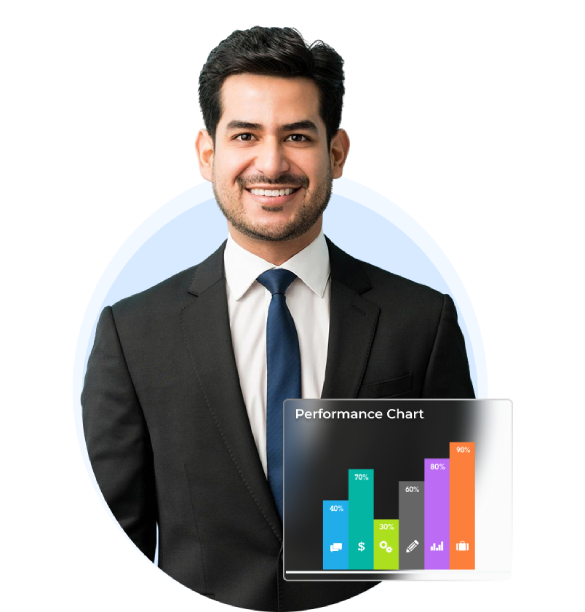
A performance management system should do more than track metrics—it should drive ownership and continuous improvement. Empower teams with clear goals, regular feedback, and transparent evaluations that strengthen engagement and growth across the organisation.
See how TankhaPay can align performance with purpose across every level of your workforce.
Book a Demo TodayA Performance Management System (PMS) enables firms to measure, evaluate, and improve employee performance in an organized manner. It guarantees that every employee's work is in line with business objectives, while providing management with clear visibility into productivity, strengths, and areas for improvement. In brief, it contributes to the development of a performance-driven culture that values feedback, accountability, and progress.
PMS makes reviews simple and meaningful. Managers can create review cycles, set performance parameters, record feedback, and track progress—all in one place. It supports both quantitative and qualitative assessments, so performance isn’t just about numbers but overall contribution. Every review is stored digitally, ensuring transparency and easy access when needed.
Yes. PMS allows HR teams to create fully customized review forms that match their internal policies and evaluation styles. You can define rating scales, include both objective and subjective metrics, and tailor questions for different roles or departments—making the process more relevant and fair.
With PMS, goal setting becomes collaborative and trackable. Managers and employees can set individual or team goals, link them to KPIs, and review progress in real time. The dashboard gives clear visibility into what’s on track, what’s delayed, and where support may be needed—turning goals into measurable outcomes.
Absolutely. Employees can log in to their dashboard and update progress on assigned goals anytime. This keeps communication open, encourages ownership, and helps managers stay informed without constant check-ins.
Yes, that’s one of the strongest features of PMS. The system helps HR teams map individual and departmental goals to broader business objectives. This alignment ensures that everyone—from junior staff to leadership—is working towards the same vision and measurable targets.
Yes, PMS supports 360-degree feedback, allowing inputs from peers, subordinates, and supervisors. This gives a balanced view of each employee’s performance, focusing not just on deliverables but also on collaboration, behavior, and leadership traits.
Yes. PMS provides performance analytics and reports that help HR and leadership teams identify high-performing departments, monitor engagement levels, and detect areas that need attention. These insights help shape better training plans, reward strategies, and long-term talent decisions.
Definitely. The system sends smart reminders for upcoming review cycles, pending feedback, and goal updates. This automation ensures no evaluation gets delayed and keeps both managers and employees aligned throughout the process.
Unlike many HR tools that focus only on annual reviews, PMS offers a continuous, insight-driven approach to performance management. It integrates goal tracking, feedback, analytics, and employee development—all in one unified HRMS platform. Plus, it’s designed for businesses of all sizes, ensuring ease of use, scalability, and measurable impact.